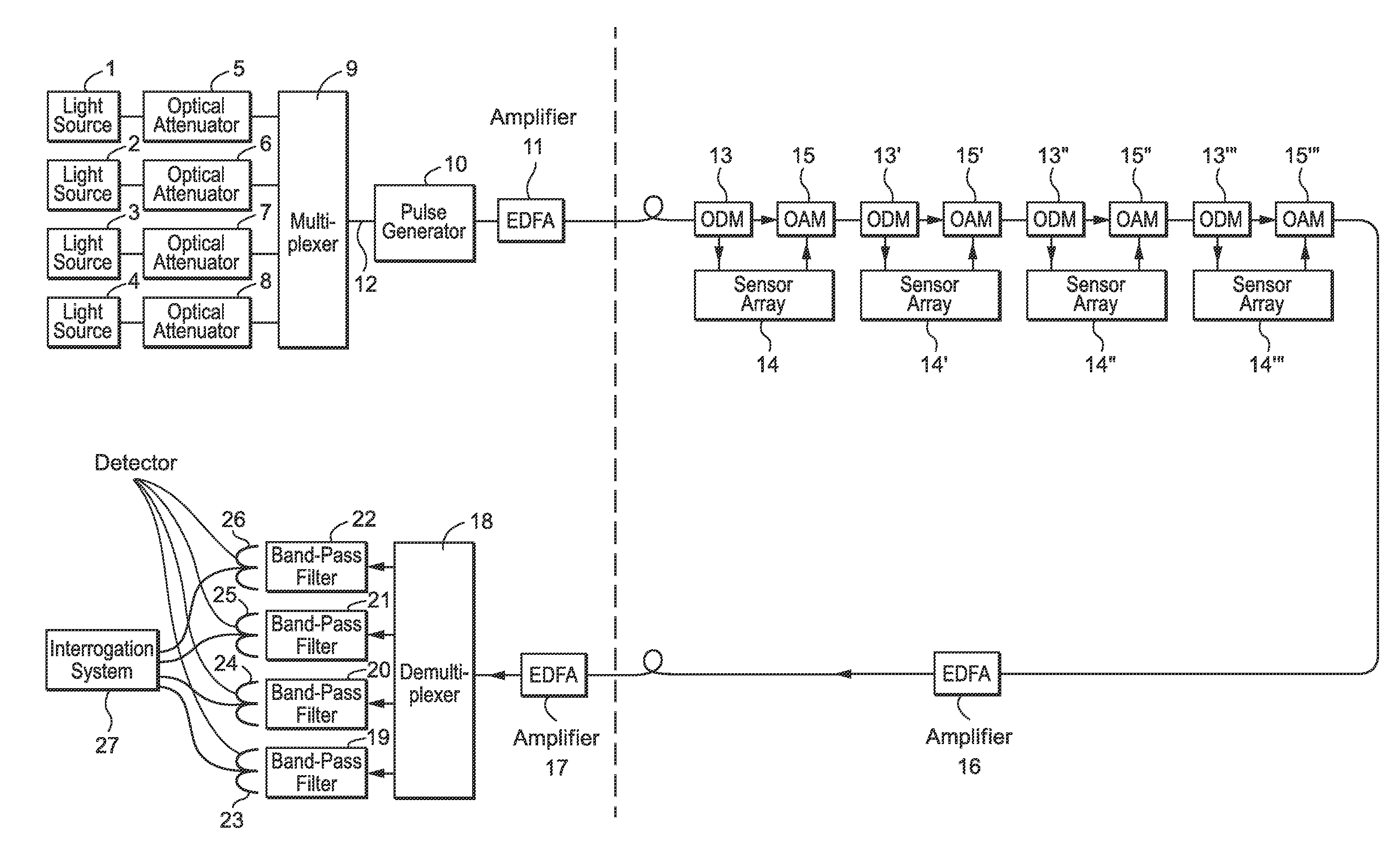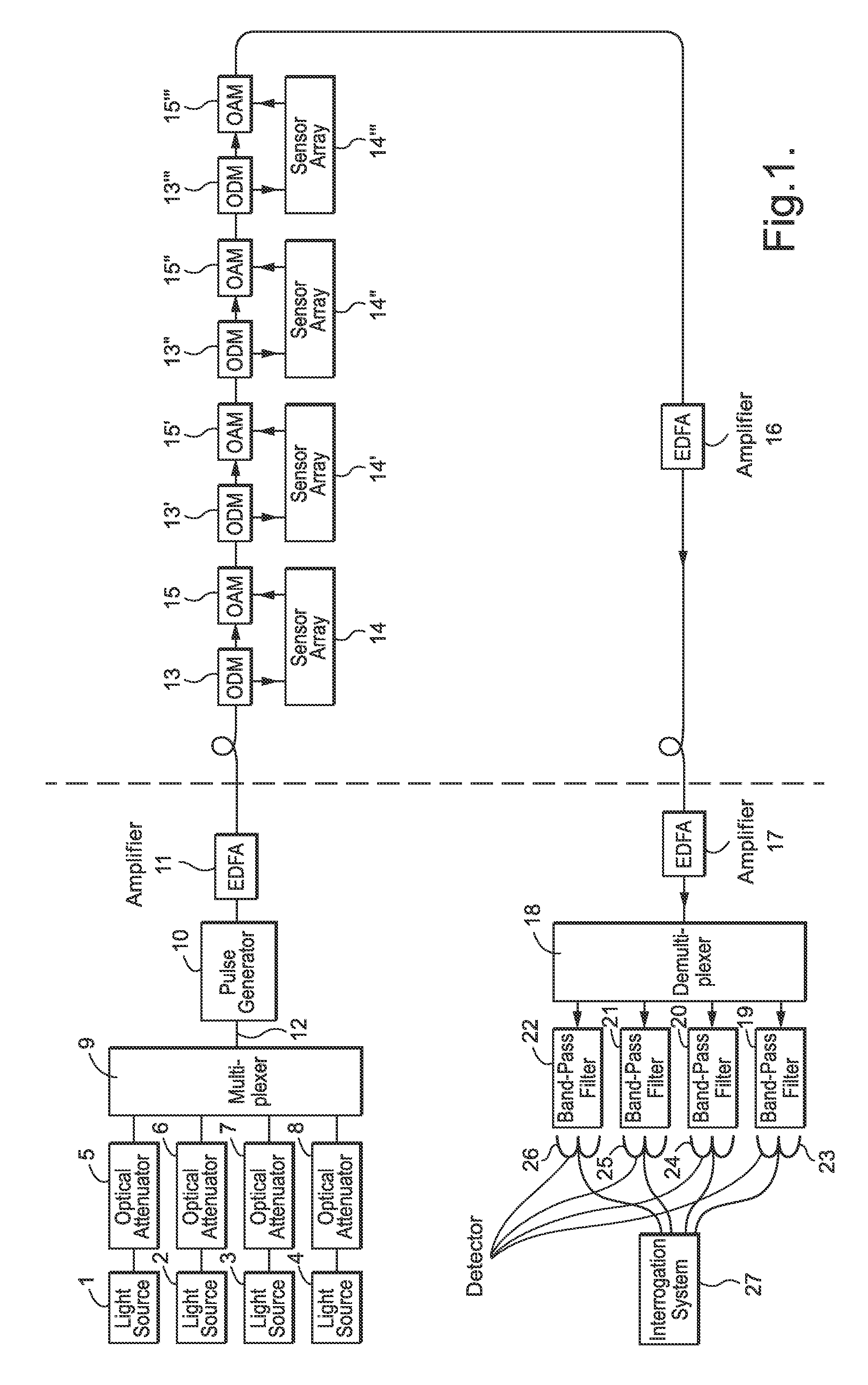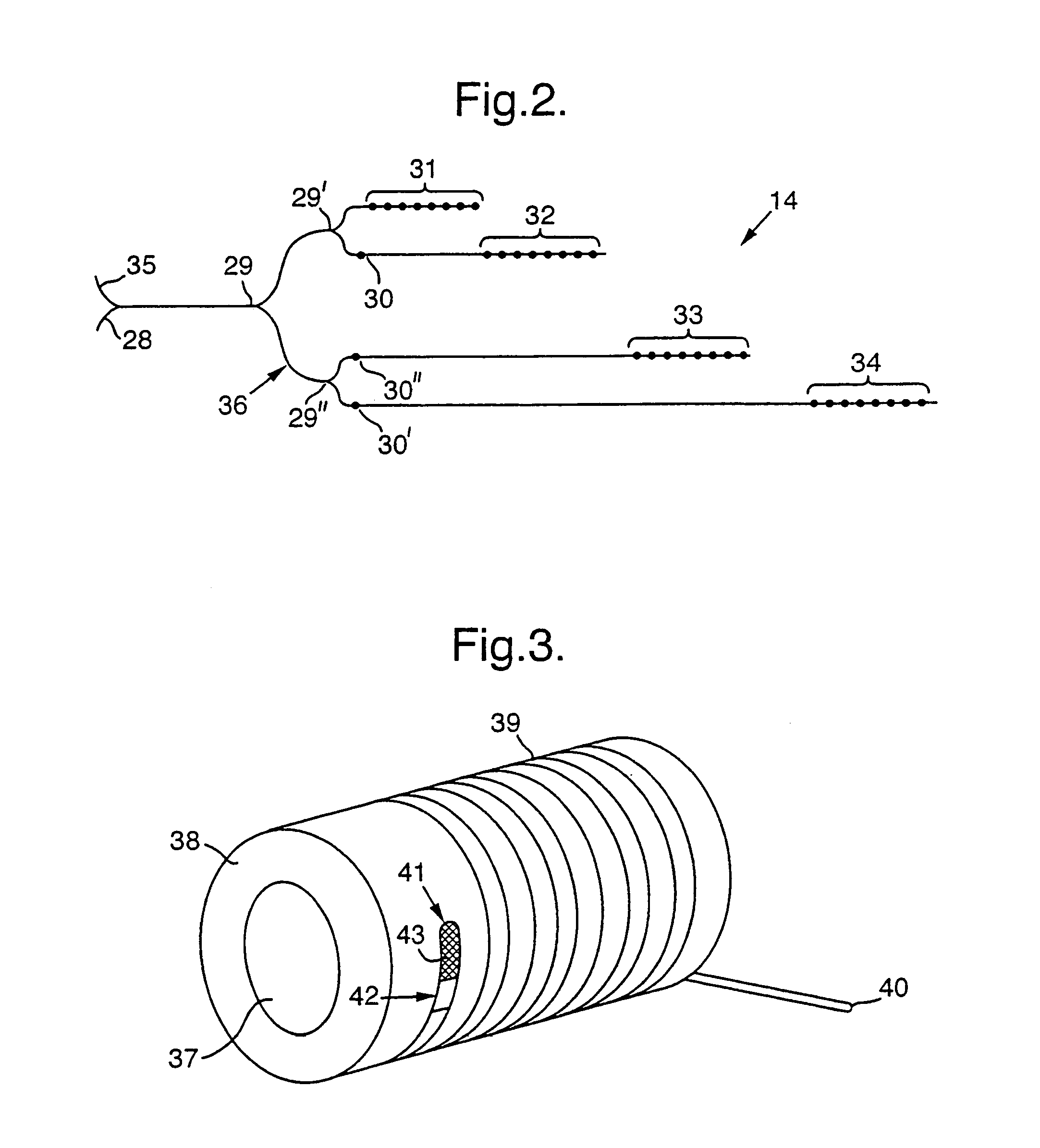Optical fibre sensor assembly
a technology of optical fibre and sensor, applied in the direction of optical detection, acceleration measurement using interia force, transmission system, etc., can solve the problems of limited technique and limited number of sensors that can be multiplexed, and achieve the effect of effective air backing, simple manufacturing, and good noise performan
- Summary
- Abstract
- Description
- Claims
- Application Information
AI Technical Summary
Benefits of technology
Problems solved by technology
Method used
Image
Examples
Embodiment Construction
[0037]FIGS. 1, 4 and 5 illustrate examples of the present invention for sensor assemblies used to monitor hydrophones. Optical fibres connect the various components of the assemblies together. In this application the term ‘dry end’ indicates the components that are on-board a ship, whereas the term ‘wet end’ indicates the components that are in the water.
[0038]FIG. 1 shows a schematic representation of a simple optical fibre sensor assembly in accordance with the present invention, comprising a source of a plurality of different substantially monochromatic signals (in this case four, denoted λ1, λ2, λ3, λ4), the source comprising four individual monochromatic light sources 1, 2, 3, 4 (each being distributed feedback erbium doped fibre laser sources). There are also four optical attenuators 5, 6, 7, 8; a wavelength multiplexer 9; a pulse generator 10; and a first erbium-doped fibre amplifier (EDFA) 11. These are all in the dry end. In the wet end are four optical drop multiplexers (O...
PUM
 Login to View More
Login to View More Abstract
Description
Claims
Application Information
 Login to View More
Login to View More - R&D
- Intellectual Property
- Life Sciences
- Materials
- Tech Scout
- Unparalleled Data Quality
- Higher Quality Content
- 60% Fewer Hallucinations
Browse by: Latest US Patents, China's latest patents, Technical Efficacy Thesaurus, Application Domain, Technology Topic, Popular Technical Reports.
© 2025 PatSnap. All rights reserved.Legal|Privacy policy|Modern Slavery Act Transparency Statement|Sitemap|About US| Contact US: help@patsnap.com



